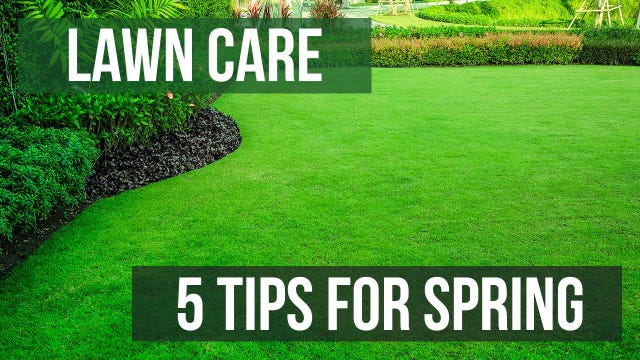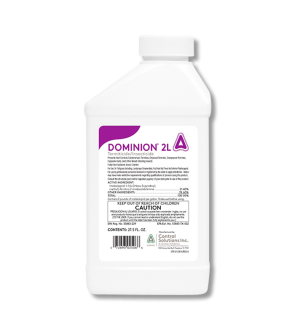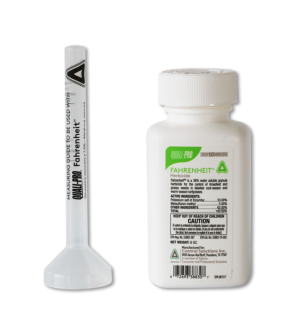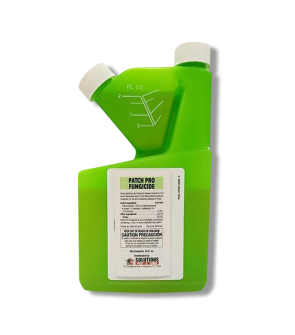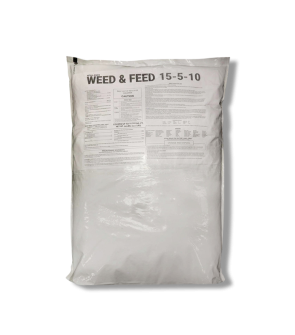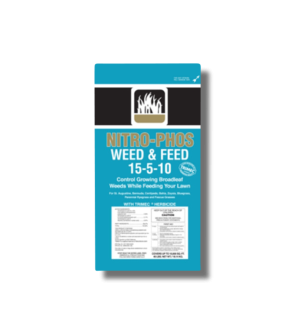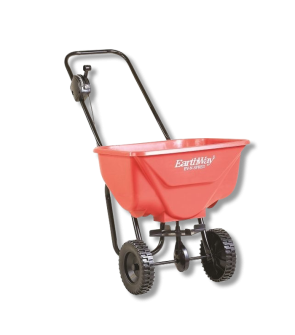Gain access to personalized product screening, the best pricing, rewards, and more!
Most Effective Products
Spring Lawn Care Tips
This article is a general care tips page for turf problems and weed issues you would encounter in the spring time. Here you can find detailed lawn care tips for a range of different scenarios where you might encounter various types of issues in your lawn in the springtime.
As spring arrives and your lawn responds to mother natures wake-up call, help prepare it for warmer weather, a year of healthy growth, and proper maintenance. By tackling a few simple steps, you can help prepare your lawn to defend itself against weeds, disease, drought, and pest issues.
The winter season tends to alter the pH of the soil, compact the earth, and create ideal condition for weeds and disease growth, so it is necessary to properly feed, fertilizer, and treat your lawn early in the season according to the steps. By following our DIY guide to spring lawn care tips in your yard you can successfully have a healthier and lush green grass for the next spring season.
Identification
It is not uncommon to find your lawn faced with weeds and other diseases as the turf is depleted from winter. Winter is very hard and sometimes long, which can deplete your yard of vital nutrients like nitrogen, phosphorus, and potassium come spring.
Identifying the type of weed, disease, or insect pest can help to gain control of your turf and increase your lawn's health.
To analyze for signs of weeds and diseases ask yourself some questions to help with identification:
- What are the features of the plant/disease?
- Where is it growing?
- What are the conducive conditions of the area?
- What is the climate that this weed is growing in?
- What region of the country is this plant growing?
You will also want to be sure of the current condition of your soil and plants. You can send a soil sample to your local agricultural extension, where they will test your soil and plants nutrient and pH levels, and can even test your homes water for contaminants. This is valuable information that can help you out later during your regular lawn care routine. Finding out the pH and turf nutrients will determine what nutrients your grass is lacking so the right products can be applied before re-seeding.
As soon as you have identified the weed or disease, learn how to control them with our detailed guides for broadleaf weeds, grassy weeds, and fungal diseases.
Inspection
Any treatment or control plan requires a detailed inspection of your yard. Before you begin to use a type of herbicide, insecticide, or fertilizer you need to know the size and location of weed, pest or diseases.
Look for signs around the area afflicted, such as if the soil is compacted and water does not draining well, stress to grass, and signs of plants being eaten or turf being uprooted fdue to pests. Most insect activity typically results in holes and damage to foliage or discoloration in leaves.
Weeds may need a post-emergent herbicide like MSM Turf or Fahrenheit Herbicide. Depending on what pests you find, you may need an insecticide like Dominion 2L, or if you are dealing with an animal, you may need a live animal trap. If you have spotted some lawn diseases taking hold, then you will need to apply a fungicide like Patch Pro.
You need to be wary of any sensitive areas where the weed, disease, and pest presence is to avoid any unnecessary damage to your turf and other restrictions that may follow with insects or pests. For certain commercial and residential areas, the treatment products could have application usage and location restrictions per the products label.
Once you have read your selected product solution directions and done your research on the type of weeds, lawn disease, or insect/pest infestation, then you can proceed to treatments.
Treatment
Before applyication, make sure to wear the appropriate personal protective equipment (PPE) that protects your face, mouth, eyes, hands, and feet when applying a herbicide, insecticide, or fertilizer. Make sure to read the all product directions on the label before application.
The location and type of turf you have will determine when to begin your spring lawn care program. Typically in the south, you will want to start in the early to mid spring whereas in the north you will begin in the fall, before the ground is frozen.
Step 1: Rake & Dethatch Your Lawn
The first thing you will need to do in spring is to rake away any leaves and debris from the top layer of soil. We say this often, but it is really important to clear your lawn of anything that can get in the way of direct sunlight, water, fertilizer, or herbicide & fungicide applications. No matter how much you raked during the fall you will still see winter weather creating an excess of debris in your lawn including acorns, branches, twigs, dead leaves, and thatch.
If you live in areas that snows, the snow can also hide any debris you may not see until spring or warmer weather. Just be sure not to work your lawn until after your lawn thaws from any frost from winter. Just stepping on your grass while frosted can cause damage and brown spots to form.
Raking in the spring also helps to remove dead grass, or thatch, that did not survive the winter frost. Thatch is a matted gathering of organic debris such as decaying grass, leaves, and roots that collects on your turf. If left, thatch will smother new foliage growth trying to rise, allow weeds to grow, and cause dead patches of grass in your lawn.
For large scale properties, if raking is just not feasible for you due to size of your yard you can rent a dethatcher device. Be sure to avoid raking and dethatching when the soil is oversaturated with water, as you may end up pulling perfectly healthy grass from the soil.
Removing excess thatch in the springtime will help light to reach your grass, improve air circulation, nutrients to flow more easily into soil for new plant growth, and allows for your selected herbicides, fertilizers, and insecticides to absorb more easily into the soil or foliage.
Step 2: Aerate Your Lawn
Aeration is poking holes into the ground to help loosen compact soil, allowing air and water to reach the grasses roots. If you can't tell if you soil is compact look for signs of water puddles gathering in your yard for long periods of time, firm soil, and stressed or dead grass.
To confirm if your soil is compact try poking a hole into the ground. The object you used to poke into the soil should easily move through the dirt with little force. If there is resistance, then the soil is probably compact and should be aerated.
Aeration can have many benefits on your lawn. Not only will it increase your lawns drainage, thus reducing puddles and excess water, but it also makes certain insecticide applications more effective by allowing the product to reach the grass roots. Aeration can also create environments that are less conducive to fungal development, thus stopping some lawn diseases from taking hold.
Make sure to aerate your lawn when your grass is out of dormancy, if done when the turf is not active it may cause severe damage. For warm-season grasses, you will want to aerate your lawn in the late spring season. For cool-season grasses, you will aerate your lawn in early spring.
To aerate your lawn, you can use a professional aeration device, like a tiller, or you can go the cost efficient method which is walking around your yard with aeration sandlas to poke holes into the soil. Either method is great because when you aerate your lawn you are helping the turf to absorb and hold moisture.
After you finish aerating your lawn, let loose dirt lay where they fell. Rain will break down the dirt and release the extra nutrients back into your lawn.
Right after aeration, apply a pre-emergent herbicide or plant new seeds into the earth. Keep in mind if you are seeding then you will need to check the pre-emergent label as some products may affect newly planted seeds.
Step 3: Apply Pre & Post-Emergent Herbicides
Weeds in your lawn are often found in the early onset of spring as your turf is emerging from winter dormancy. Springtime lawns are not necessarily in peak fighting condition as they just have spent their energy trying to survive the winter. That is why a pre-emergent herbicide application in spring is needed to give your turf grass a fighting chance as the season progresses.
Pre-emergents are designed to treat targeted weeds per its label, before they germinate or emerge in your lawn. It is an effective preventative method for controlling and eliminating weeds to help keep your lawn in shape. If applied in the spring and fall, the pre-emergent herbicide will fight against weeds like crabgrasses, dandelions and other broadleaf and grassy weeds for various seasons.
We recommend using Barricade Pre-Emergent Herbicide as it is an easy to use granular herbicide that is also cost efective. Barricade also has a broad label and will effectively prevent broadleaf and grassy weeds in most turfs. Depending on your turf type, you will only need to apply 1.5 to 4 pounds of Barricade per 1,000 square feet.
However, if you are already seeing weeds present in your lawn then you will need to apply a post-emergent herbicide. MSM Turf Herbicide is a recommendable post-emergent product that treats severe weed infestations within your lawn and will not affect your grass. For most applications, 0.125 ounce to 1.0 ounce of MSM Turf Herbicide will treat up to 1 acre.
If you are not sure of the weed you are dealing with or just want to kill whatever weed you see, it may be best for you to use a broad spectrum herbicide to control the weeds. If you choose to go non-selective, which will target any vegetation, then one of the best products for that is Eraser 41%. Keep in mind that because Eraser is a non-selective herbicide, we do not recommend using this on your lawn. Do your best to limit this to killing weeds along walkways, in cracks in pavement, or anywhere you do not want any vegetation.
Step 4: Fertilize & Re-Seed Your Lawn For Bare Spots
Fertilizing your soil with the appropriate levels of nitrogen, phosphorus, and potassium which will help to make soil fertile for new grass growth.
Solutions 15-5-10 Weed & Feed fertilizer with Trimec is our recommended fertilizer for spring lawn care. This product contains a blend of fertilizer and weed killer that control numerous types of weeds. You will see results within 30 days of application and with one bag of Solutions Weed & Feed, it will cover 12,500 to 15,625 square feet. You will need to make fertilizer applications based on your area and type of grass within your region.
The nutrients in fertilizers are necessary to promote the healthy development of roots when planting new seeds. Before application of fertilizer, allow 6 to 8 weeks after fertilizer application to plant new seeds. Some fertilizers will inhibit the germination of new grass seeds, so it is best to wait the recommended time or until your new grass is established.
Step 5: Properly Water Your Lawn
When you lay down your fertilizer, your job is not complete. Your grass is not only needing supplemental levels of nutrients, but water as well. Watering is needed to keep the soil moist for plant growth and root movement within the earth, and it is also needed to activate your selected fertilizer.
However, you will need to be wary of how much water you are applying. Too much of a good thing is not always best. Watering can be a complicated process, and is something that depends on what part of the country you are in.
The proper way to water your lawn is to water deeply once a week in the morning, rather than a little every day. Give your lawn at least 1 to 1.5 inches of water every week. This much water in the morning ensures the water will travel down to your turf’s root zone. If you water your lawn during the day, then most of the water will get evaporated before it can be absorbed.
Step 6: Mow Your Grass
During the spring, you will begin to notice that your grass is growing more frequently due to the warmer temperatures, and increased rainfall or irrigation. Although it is tiring, mowing is a part of a proper spring lawn care program.
Depending on your location and the grass' growth rate, the timing in which you mow may vary. A general rule of thumb is when your grass exceeds three inches or above, which would be every week or so. A healthy lawn will have dense tall grass blades, which will help to prevent weed seeds from germinating.
When mowing, only remove tall grass higher than three inches because the grass roots store water and helps to make it more drought tolerant. The taller the grass is before mowing allows the grass roots to deepen further and store more water. Cutting grass to short can cause stunted growths, dull color, and weaken the grasses tolerance.
Key Takeaways
- Lawn care maintenance depends on a proper pre-emergent herbicide and fertilizer application schedule.
- Weeds, and diseases will appear on a turf or landscape depending on a number of different circumstances. Nature will always work to cover your lawn with foliage, but depending on the current nutrient levels or underlining diseases will determine the appearance of your lawn if you are not already implanting a care program.
- Dethatch every spring to rid of undesired winter debris to help promote new growth.
- Yard care is a lot of work that will take time to yield results. Do not get consumed or overwhelmed with the time it takes to get a perfectly manicured lawn, it is a labor of love.






